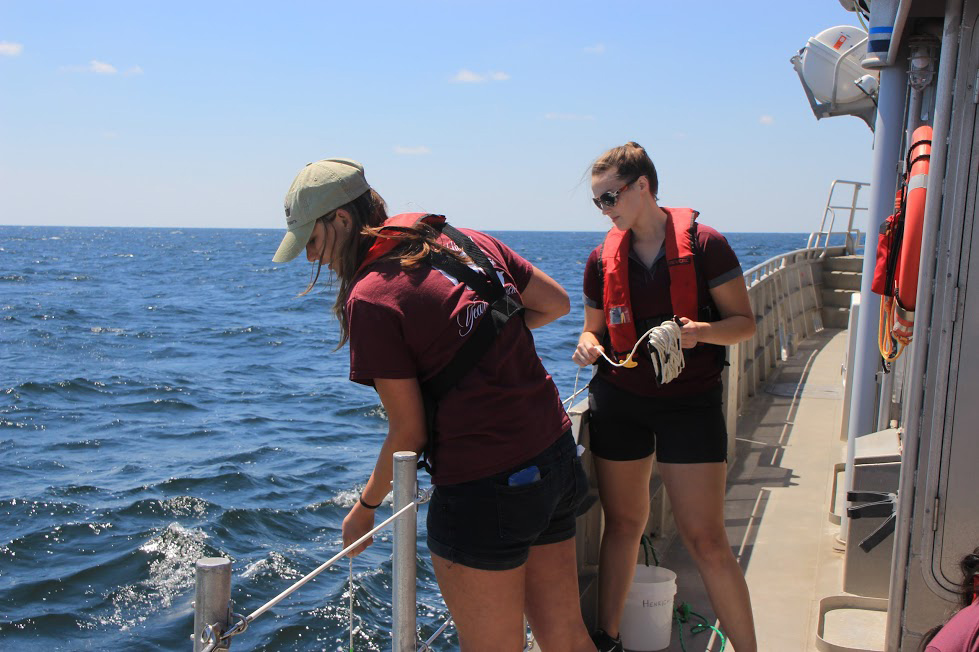
Oceanography is an interdisciplinary science where math, physics, chemistry, biology and geology intersect.
Traditionally, we discuss oceanography in terms of four separate but related branches: physical oceanography, chemical oceanography, biological oceanography and geological oceanography.
Physical oceanography involves the study of the properties (temperature, density, etc.) and movement (waves, currents, and tides) of seawater and the interaction between the ocean and the atmosphere.
Chemical oceanography involves the study of the composition of seawater and the biogeochemical cycles that affect it.
Biological oceanography involves the study of the biological organisms in the ocean (including life cycles and food production) such as bacteria, phytoplankton, zooplankton and extending to the more traditional marine biology focus of fish and marine mammals.
Geological oceanography focuses on the structure, features, and evolution of the ocean basins.
Oceanography is greater than the sum of these specific branches. Oceanographers use a variety of tools to study the ocean, and many of these studies involve more than one branch. Oceanographers collect discrete water, sediment and biological samples using ships (Research Vessels). They deploy autonomous sampling systems such as buoys and gliders to collect data over time and space scales that cannot be done with a ship. Remote sensing from aircraft and satellites allows oceanographers to get a global view of some parameters. Modeling allows oceanographers to look at the past and predict the future state of the ocean (e.g circulation, air-sea interactions, sustainability of fisheries, quality of water, etc.).
The knowledge gained from all of these types of measurements allows oceanographers to do many things including, but not limited to:
- better predict (using models) changes in weather and climate improve the forecast for hazards; natural (e.g. hurricanes) or man-made (e.g. oil spills)
- assess the impact of pollutants on the quality of water in the ocean
- protect the quality of the water in the ocean in the face of increasing human demands (e.g. fisheries, tourism, shipping, offshore oil & gas, offshore wind farms, etc.)
